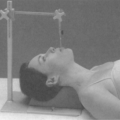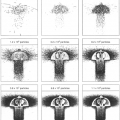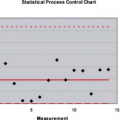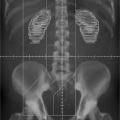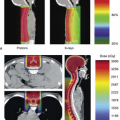Patient Data Acquisition
Bahman Emami
Introduction
Radiation oncology is a clinical specialty devoted to the management of patients with malignant neoplasms by using ionizing radiation alone or in combination with other modalities. This endeavor also includes investigation of biological and physical basis of radiotherapy and training of professionals in this field. The aim of radiotherapy is to deliver a precisely measured dose of radiation to a defined target volume with as small as dose as possible to the surrounding healthy tissues. The aim is eradication of cancer, with side effects as few and mild as possible, resulting in improved quality of life and prolongation of survival, at reasonable cost.
Although patients are usually referred to radiation oncologist after the diagnosis has been made or is highly probable from diagnostic studies, it is absolutely essential that radiation oncologist be fully knowledgeable and able to execute the entire process of workup, diagnosis, and staging of patients. They direct any additional medications needed during treatment and are available in any emergency. As emphasized in Perez and Brady (1), it is essential for the radiation oncologist to cooperate closely with specialists in other fields in the management of patient to provide better care.
Diagnosis
Clinical Presentation
Persistent changes in normal body functions, such as alterations in eating habits, loss of appetite, and difficulty in swallowing, demand evaluation and explanation. Other presentations, such as a lump or a nodule at any site, unnatural bleeding of orifices, and fever or infections not responding to antibiotic therapy, also fall into this category. These early signs of cancer have been sketched for different sites in general (Table 3.1). Thorough evaluation of these signs can often lead to detection of cancer at early stages, in which therapy most often proves successful. An important point in all of these presentations is a high index of suspicion. Periodic screening tests are very important to early detection. Annual chest x-ray films for lung cancer, annual mammograms for breast cancer, and annual Pap smears for uterine cancer have shown to help with early detection and improved cure rate periodic colonoscopy and prostate-specific antigen (PSA; for men) have proven to save many lives.
The role of tumor markers in the diagnosis of cancer has yet to be defined, with the exception of PSA as a most significant indicator of prostate cancer. As yet no simple test with sufficient sensitivity and specificity to detect the presence of cancer is available. Most tumor markers, such as carcinoembryonic antigen (CEA) in colon cancer and human gonadotropin hormones (BHCG) and α-fetal protein (AFP) in nonseminomatous testicular cancers, are more useful for monitoring the patient’s response and detecting recurrence than as a definitive diagnostic tool in screening early cancer.
Surgical Biopsy
Once cancer is suspected, a careful workup, including a thorough history and physical examination, a detailed examination of the anatomical site under suspicion, and the appropriate radiological examination, should be undertaken.
Most importantly, clinical leads should be pursued and investigative studies should not be unduly procrastinated. Surgical biopsy (or excision), however, is the single most important procedure in establishing a firm diagnosis of cancer. With rare exceptions a histologic diagnosis is essential before undertaking any radical treatment. Oncological imaging can precede or follow surgical biopsy, depending on the given clinical condition. Once the pathological diagnosis is made, the anatomical extent or stage of the disease should be determined (discussed later in the chapter).
Oncological Imaging
An extended array of radiological studies is available. The aim of these studies is to determine the extent of local disease, involvement of regional nodes by a given cancer, and the presence or absence of distant metastasis. In ordering these radiographic studies, the physician has to be discriminating and cost-effective, obtaining the fewest studies adequate for answering the question. Familiarity with multimodality imaging is essential for practicing modern radiotherapy. Radiographic studies include chest x-ray
film, mammogram, radionuclide scan, ultrasound, computed tomography (CT), magnetic resonance imaging (MRI), and recently positron emission tomography (PET). Although the use of one or more of these studies depends on the clinical condition at hand and is under the decision of the treating physician, certain radiographic studies are in general use in oncology. For example, CT scan of the chest and upper abdomen is a prerequisite for accurate staging of patients with lung cancer. This study not only evaluates the extent of primary tumor in the chest, status of involved mediastinal nodes, and presence or absence of pleural effusion but also investigates the status of liver and the adrenals, which are frequent sites of metastasis. MRI is the radiographic study of choice for almost all tumors of the central nervous system and possible sarcomas at any site in the body. Patients with head and neck cancer, especially in the advanced stage, almost always require a CT scan of the head and neck area, and mammography is the essential radiographic workup for patients with breast cancer. Nuclear imaging still plays an important role, although it has been replaced by CT scan or MRI for detecting brain metastasis. Gallium scan in Hodgkin’s disease, radioactive iodine scan for evaluation of thyroid cancer, and finally bone scan for evaluation of suspected bony metastasis are considered routine procedures.
film, mammogram, radionuclide scan, ultrasound, computed tomography (CT), magnetic resonance imaging (MRI), and recently positron emission tomography (PET). Although the use of one or more of these studies depends on the clinical condition at hand and is under the decision of the treating physician, certain radiographic studies are in general use in oncology. For example, CT scan of the chest and upper abdomen is a prerequisite for accurate staging of patients with lung cancer. This study not only evaluates the extent of primary tumor in the chest, status of involved mediastinal nodes, and presence or absence of pleural effusion but also investigates the status of liver and the adrenals, which are frequent sites of metastasis. MRI is the radiographic study of choice for almost all tumors of the central nervous system and possible sarcomas at any site in the body. Patients with head and neck cancer, especially in the advanced stage, almost always require a CT scan of the head and neck area, and mammography is the essential radiographic workup for patients with breast cancer. Nuclear imaging still plays an important role, although it has been replaced by CT scan or MRI for detecting brain metastasis. Gallium scan in Hodgkin’s disease, radioactive iodine scan for evaluation of thyroid cancer, and finally bone scan for evaluation of suspected bony metastasis are considered routine procedures.
Table 3.1 Cancer’s Seven Warning Signals | |||||||||
|---|---|---|---|---|---|---|---|---|---|
|
Ultrasound remains the least expensive and the least hazardous alternative to any of the other studies, but unfortunately, because of the inferior quality of the information, it is less useful in most cases.
CT scan, the most widely used imaging modality, is the essential part of the simulation process in modern radiotherapy planning procedures, as will be discussed below.
During the past 10 years, in almost every field of oncology the impact of PET imaging has been evaluated, leading to current practice with PET or PET/CT contributing widely to oncological patient care by its proven advantages over anatomical imaging in staging and restaging of cancer (2,3). Majority of PET examinations are being performed with glucose analog fluorodeoxyglucose (FDG), which is accumulated in most active tissues including malignant tumors. FDG-PET has shown to have clinical impact on diagnosis, staging and/or restaging of lung cancer, head and neck cancer, colorectal cancer, melanoma, lymphoma, breast cancer, gastroesophageal cancer, pancreatic cancer, testicular cancer, and thyroid cancer. FTG-PET is a routine use in staging of lung cancer (4), malignant lymphomas (5), and colorectal cancer.
Vast experience of the last 10 years with FDG-PET has resulted in significant progress in oncological imaging especially in the era of functional imaging. Modern imaging technologies allow visualization of not only anatomical structures within the body (CT) but also biological markers of relevance for the response to treatment especially radiation therapy (PET and MRI) (6). Tumor images based on PET technology allow visualization of a specific biomarker, whereas advanced MRI gives information about the physiological and metabolic status of the cancer tissue. Ongoing research scientists are studying functional imaging techniques by comparing with the pathologist specimens of various disease sites (7). Progress in functional imaging will allow radiation oncologists for individual treatment adaptation. Imaging of the biology of cancer tissue also makes it possible to identify regions within the patient’s tumor that will benefit from higher radiation dose. Combined with modern radiation technologies, such as IMRT/IGRT, this allows selective radiation of particularly important regions within the cancer tissue. By confining the radiation dose according to biological features of cancer tissue, more patients could potentially be cured without compromising healthy tissue (8).
Stay updated, free articles. Join our Telegram channel

Full access? Get Clinical Tree


